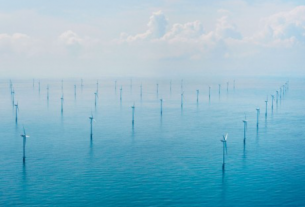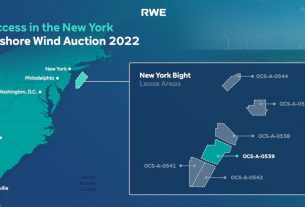Germany – RWE and DNV have recently reached agreement on the parameters of a significant study evaluating the effects of offshore wind’s far wakes.
The purpose of the study calls for DNV to substantiate the effects found by RWE experts. Large groups of offshore wind farms could have significant wind-shadowing impacts that would affect the wind yield of upcoming offshore farms, according to RWE models.
RWE continuously evaluates its methods and strategies for modeling wind energy yield. The business has a solid knowledge of these long-distance “cluster wake effects” as a result of this.
According to the RWE’s early model, they can have an effect up to 200 kilometers away and diminish the energy yield by almost 10% in some circumstances in the wake zones. Future offshore development projects in Europe, including those in the German North Sea, may be impacted by this.
Preliminary results in April
The independent energy expert and assurance provider DNV will now get the data from RWE experts in order to verify the preliminary modeling findings. DNV will independently analyze the RWE data and conduct CFD modeling to evaluate the RWE results. In order to include potential losses, the study intends to present the initial DNV results in April.
Although it would take many years for huge offshore wind clusters to be built out, the effects will already have an impact on the economics of projects that are about to be put up for auction by governments.




